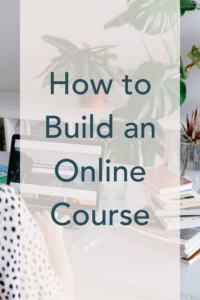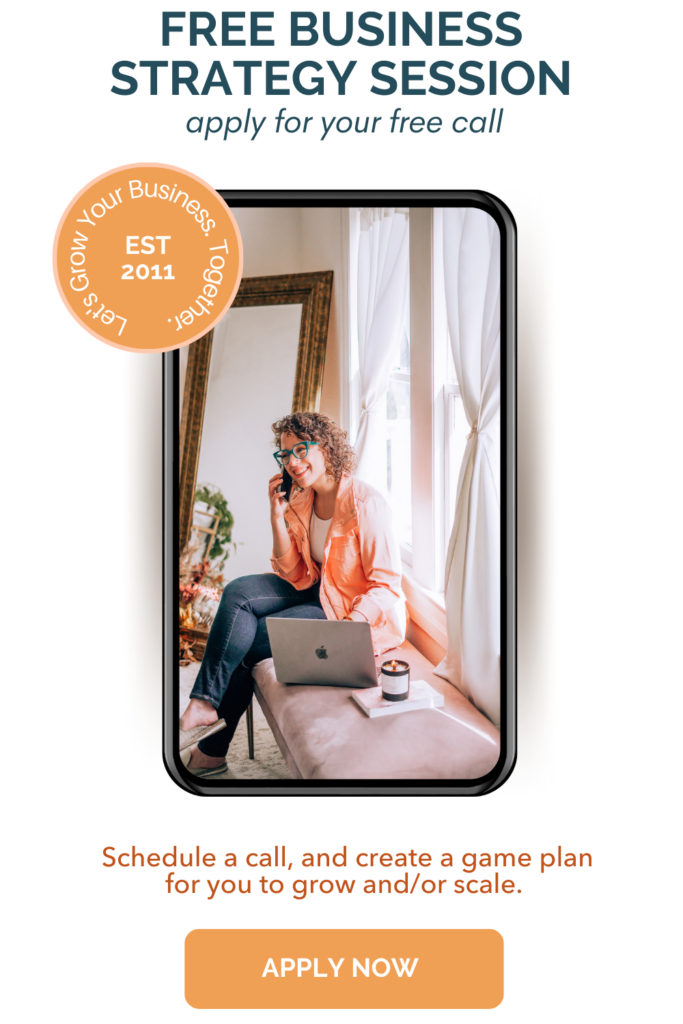How to build an online course: the tools and strategies you need to create a profitable course.
Building an online course requires a lot of hard work and planning. This project involves several steps, including:
- Topic selection
- Choosing an LMS (Learning Management System) provider
- Creating the course – or at least the bones of it
Coming Up With a Course Topic for Your Online Course
The first thing you need to ask yourself when coming up with a course topic is whether you have an existing audience.
If you do have an existing audience:
Ask them what they want! Don’t do this directly, because usually they don’t really know. But you can email your list and ask them some basic market research questions:
- What are their pain points?
- What have they already tried that that hasn’t worked?
- What worked somewhat, but they are still struggling?
- How it will feel when they find a solution that works?
If you don’t have an audience:
If you have no existing audience, I recommend doing a service based business or coaching instead of a course.
Or, instead, you can do market research through social media conversations: on Instagram, Facebook, etc. Facebook groups are an especially fruitful place to do this. You can just go in and ask some questions, or you can do a keyword search of the group.
If you don’t have an online business at all, you can also ask your offline friends, or ask local businesses in real life the same market research questions as above.
Either way, to really nail your course topic, you’ll need to figure out the intersection of your current skillset, your passion, and your interest. You have to really care about helping people in the area that you choose.
For any brand new course, always plan to sell it before you finish building it.
ALWAYS sell your course before you build it.
Buyers will say what they want, but it might not be what they really want. You have to learn how to read between the lines to figure out the ACTUAL problem, the REAL pain point. You can do all the market research in the world, but you don’t know till you sell it whether you are right.
In the end, the market will tell you what they want with their money.
Clearly establish your students’ expectations around your beta launch: are they getting a great discount? Exclusive collaboration with you? Make sure they understand that they are buying a course that is being built as they go through it.
How Long Does It Take to Build an Online Course?
How long it will take you to create an online course will really depend on what course you are trying to make. A mini-course can be hammered out in one day, while a 10-module deep dive could take months to finish.
Here’s the basic steps to build a course:
- Select your hosting platform for the course, and the technology you will use.
- Create an outline – Outline your videos, modules, topics, and subtopics. A well-defined outline is extremely helpful when you start creating your materials, including videos and lesson plans.
- Create the intro to your course.
- Sell it. Focus your messaging on social media and email marketing, and do a beta launch to your email list. This launch is your final market test – if it’s successful with at least a few sales, you know that your product is tested and will sell. If not – you know that you have some adjustments to make before you try again.
- Finish the course, considering the feedback of your beta students in the process.

What Are the Best Platforms to Build an Online Course?
An online learning platform should not present a steep learning curve for you as an online course creator or, eventually, for those that will use your online course. It should be easy to use for both you and your students!
In addition to ease of use, an uncomplicated dashboard, intuitive systems, and meaningful support options are essential components of your selection criteria.
Remember that every LMS provider has its specialty and unique features. Choose a versatile e-learning platform builder that will allow you to sell any type of course you may want to in the future: self-paced courses, 1-to-1 live classes, and group webinars.
LMS Platforms I recommend
- Thinkific
- Clickfunnels
- Podia
- Facebook Groups – this option is free to use and can be very effective
How to Create a Curriculum for your Online Course
Here are the steps for developing a learning curriculum:
- Gather your materials – Being organized is key to successful projects. Collect all relevant resources. Include the instructional materials you have researched, taught, or borrowed from colleagues.
- Establish goals and estimate a time frame for each – Identify the activities, assessments, and lectures your students will take to complete your course. If the course is on a specific schedule, establish how long students will spend on each part. For self-paced learners, this step is not as important.
- Align your modules with your learning goals – Review the components of your course to determine if they fit in terms of the set objectives.
- Assessment exercises – How will you assess the knowledge learned by your students via your course?
Assessment tools include tests and quizzes to provide you with scores to gauge the amount of knowledge your students have gained and whether they have learned the core concepts of your course.
Tools to Build an Online Course
Don’t feel like you need to buy expensive equipment and software to get started. It’s more important to create the course and publish it.
As long as you have the basic tools for recording lessons and editing video clips, you are good to go.
You will need:
1. Recording equipment
Course creators typically record videos of their lessons. A smartphone will do the job just fine. For higher quality videos, though, you can invest in a webcam or digital camera.
Also, invest in the best microphone you can afford. Even if you have great content for your lessons, the audio quality must be exceptional, as well. Otherwise, you will run the risk of a poor learning experience for your students.
2. Editing software
Free, easy-to-use editing software is available online. When you upload your video for editing, a trimming option will appear. You can trim at any point in the video with the ability to go back and amend your trimming choices.
You can use free sound clip options to add music to your videos; this can add an entirely new dimension to your videos.
3. Lighting and accessories
Add a few more accessories to ensure high-quality video recordings, such as:
- Smartphone tripod mount
- Ring light (for iPhone) – offers three modes for basic flattering lighting.
You want to look for affordable equipment that is not difficult to use. Once you have the right tools for the job, you can create great learning materials for your course.
NEED MORE SUPPORT?
If you are new to creating and selling courses, it can be tough to get off on the right foot. Or, if you’ve had a few launches but aren’t sure where to go next, it’s easy to feel stuck.
If you’d like some help growing your business, let’s chat: AlisonReeves.Co/strategy-call







